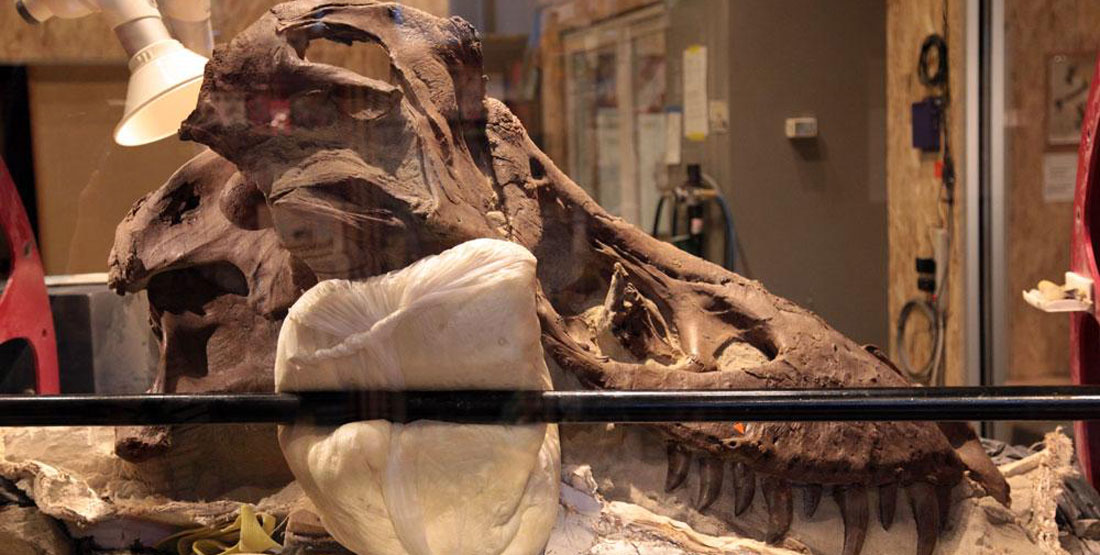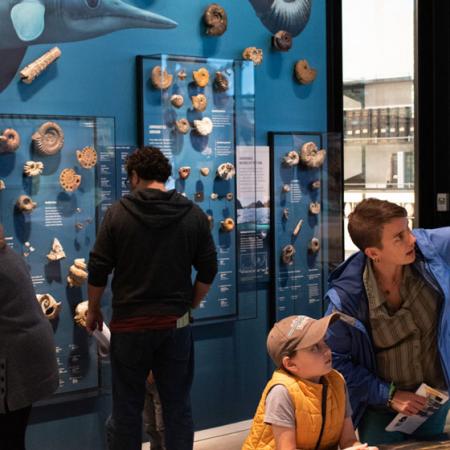In 2016, curator Greg Wilson led a team of paleontologists from the University of Washington’s Burke Museum that recovered a partial skeleton of T. rex from the Hell Creek Formation in eastern Montana. The dinosaur was discovered by two Burke volunteers (Luke Tufts and Jason Love), and was excavated by a crew led by Burke postdoctoral fellow Dave DeMar with a paleontological excavation permit from the Bureau of Land Management and funding from Nathan Myhrvold.
The "Tufts-Love" T. rex is now undergoing preparation at the museum, where visitors can watch the process every day. While perhaps about 30 percent of the skeleton appears to have been preserved, we certainly got the right 30 percent! This is the fifth T. rex skull that I’ve done (all of the others are also from Montana) and it is the most well-preserved of all of those.
A few of the bones are displaced, but most of the skull is articulated in the correct anatomical position and there is only minimal crushing or distortion. The term “exquisite” does not overstate the quality of this specimen. Once preparation is complete, the skull will need to be mounted for display in the New Burke, so catch it now while it’s available to be seen!
But first, sit back and enjoy the latest offering in the Jurassic Park movie franchise. While these films definitely put the fiction in science-fiction, they satisfy our curiosity by exploring a question that nearly everyone who looks at a dinosaur ponders: what would it be like for us humans to interact with these animals? By bridging a 66 million year gap in time, the films give us some inspiring, thrilling, and sometimes terrifying answers.
Better still, they get people excited about dinosaurs and paleontology. There is currently a whole generation of paleontologists working in our museums and universities who will testify that seeing Jurassic Park 25 years ago was at least partly responsible for their career choice. I like to think that seeing that steely-eyed, Jeep-chasing T. rex had something to do with it.
---
Michael Holland is an artist and fossil preparator from Montana specializing in the creation of natural history museum exhibits. His work can be seen in several museums, including the Museum of the Rockies, The Carnegie Museum of Natural History, and the Smithsonian. He is now working at the Burke Museum as the lead preparator of the Hell Creek Project.



